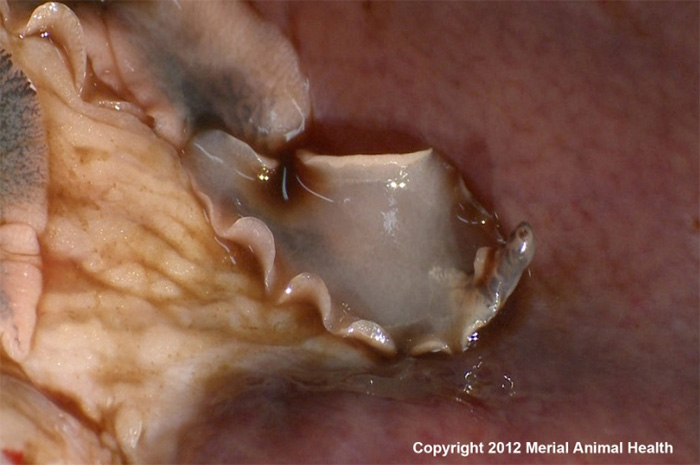
Farmers are being warned of the risk of liver fluke infection when they turn out their cattle this spring following the mild and exceptionally wet winter according to Lynda Maris, Brand Manager with Merial Animal Health.
“Making the most of grass is key to the profitability of most cattle farmers,” says Lynda, “So it is really important that cattle get the full benefit from it and maximise their growth potential.”
“Liver fluke infection can affect growth rates and increase finishing times. The risk of infection following turn-out has been increased by the mild and very wet winter we have just experienced.”
“While most farmers are aware that fluke can affect cattle during the winter months, and focus on giving a housing dose, many are unaware of the increasing importance of controlling fluke infections during the spring and summer months and the benefits of giving a fluke treatment as part of their grazing treatment programmes.”
All stages of fluke development on pasture are affected by the climate, with mild and wet conditions favouring the parasite’s development. As such, the conditions experienced in recent years have contributed to a significant increase in the risk, geographical spread and seasonality of fluke infection. For many farms, liver fluke is now a real threat to cattle at grass, and treatment 8 to 10 weeks after turn-out can be beneficial.
Fluke infection can cause damage to the liver such that the productivity of an animal suffers significantly. Research shows that even low levels of infection, while not producing any obvious clinical effects, can depress live weight gain by up to 1.2kg/week1.
Lynda points out: “Such a reduction in live weight gain increases the time to finishing and obviously every additional day that an animal is kept on farm costs the farmer money! In fact according to research by UK industry body EBLEX, liver fluke is currently estimated to be costing beef farmers approximately £87 per case2. On this basis it is extremely cost effective to treat against the parasite.”
Giving a fluke treatment to grazing cattle post –turnout can help to break the life cycle of the parasite by minimising fluke egg output and thereby reducing the risk of infection later in the season.
Such a treatment will also remove fluke from the animal and improve live weight gain from the farmer’s cheapest source of feed - grass. Indeed grazing cattle treated for fluke and worms have been shown to give a 31% increase in weight gain over untreated cattle and an 8% increase over those that were treated only for roundworms3.
As it typically takes 8-12 weeks from cattle becoming infected at pasture to the stage where fluke are in the liver as egg-laying adults , treatment should be given 8 to 10 weeks after turnout. Treatment at this time will kill adult fluke, reduce egg output and decrease pasture contamination. This timing also ties in with the planned worming treatment programme on many farms.
